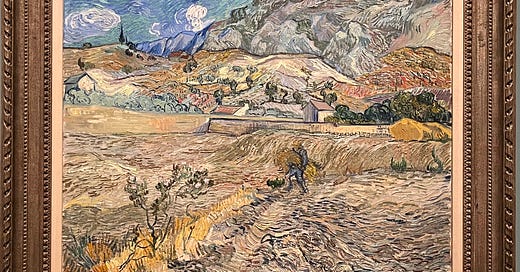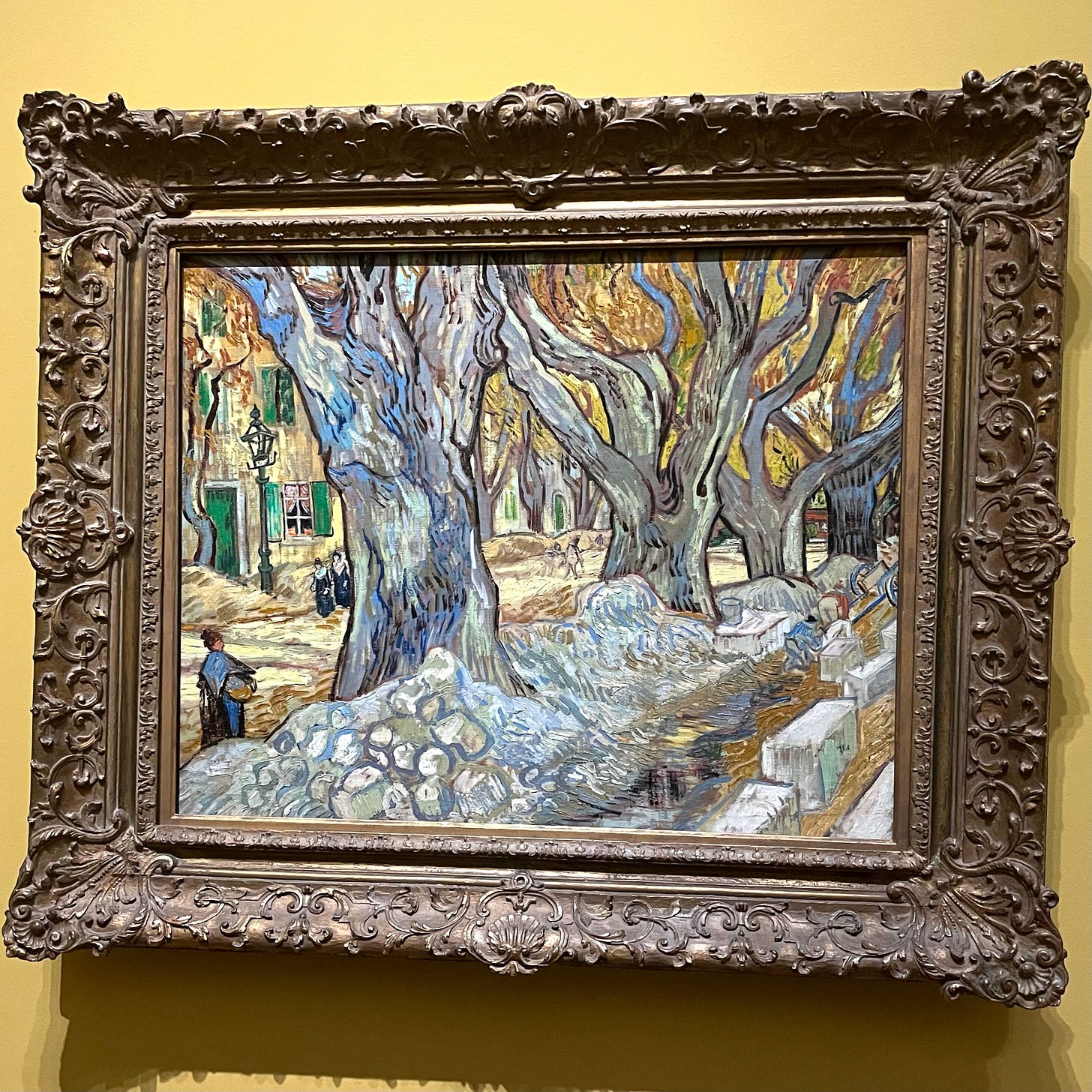Vincent van Gogh
In case you missed it, here is a summary of the recent Van Gogh exhibition at the National Gallery
The starkest point of the National Gallery exhibition, Van Gogh: Poets and Lovers, is when a rocky landscape rises as if torn up and pressed into the canvas, or hewn from a giant tablet, rather than receding into the distance like a traditional landscape painting. Landscape at Saint-Rémy adopts few pictorial conventions, but is painstakingly worked through, a complex array of tonal values that achieve a fine balance, shimmering grey like a slab of granite carved at all angles to the grain by an Egyptian slave/master craftsman.
Another stark jut on the horizon is the fact that all the pictures were made within two years of Van Gogh’s suicide in 1890. People often remark that he blossomed late, and it’s probably futile to ask what he would have gone on to make. But the exhibition makes one thing clear. He didn’t blossom; he petrified. In contrast with the parks and cafés of Paris and Arles, the stoniness of what he painted at the asylum in Saint-Rémy – the purple-grey landscapes, The Large Plane Trees surging up architecturally amidst huge stone blocks and heaps of rubble waiting to be made into a road – matches the transformation from soft to solid by which leaves and wispy fields and blossoming violets and light become the heavy cake of the picture surfaces.
Van Gogh was obsessed with eternal themes. The faceless silhouettes working the fields; the gardener, Patience Escalier, whom Van Gogh transformed into the type of a peasant by emphasising the roundness of the orbit of his eyes; the blue penumbra on the farmer’s head in Landscape at Saint-Rémy, as if he were the moon come to earth for hay. Paul wanted to make of Impressionism ‘something solid and durable like the art of the museums’, but Vincent turned it into archaeology. Tracking the surface of Landscape at Saint-Rémy you encounter clarity, as in the way the light hits the bales on the right, and confusion, as in the shrub of the left foreground, where contingency traces faint lines onto the two or five or twelve thousand years compressed into the paint, as the picture would have us believe.
It is not really a relief sculpture, because the sense of near and far is produced entirely by tone and colour, such as at the point to the left where the mountains shift from grey to blue. But the surface is unified by an equality of mark, a short, heavy line, that is the same whether it is yellow or white, cliff or sky. These chisel marks wheeling and cutting their way across the fields are in one respect indifferent to the colours, following the form. The colours change with the sun and the seasons; they follow the lines. Yet the lines are also one with them, a sculpture of colours.
Van Gogh: Poets and Lovers ran at the National Gallery, London, from 14 September 2024 to 19 January 2025.






Hello, Gina Medcalf, Charles Hewling, and myself, Mick Blake enjoyed your refreshing review.
You describe this so well and I wish I had gone to see it. There’s a short story by Greg Jackson called The Hollow where one of the characters is obsessed with Van Gogh, I think it sums it up well: “Valente described an impossible person, a scoundrel, a tramp, difficult and gruff, prone to fighting, taking up with prostitutes, rejected by everyone, repulsive even to his parents, unlovable, homeless, driven by inexpressible love, or love that was expressible only in a particular form that did not allow it to be shared between two people, and that was therefore cursed, a love that was refused while he was alive, and only, when this cretin, this parasite, offensive to every standard of good taste, was gone, did everyone see how much they did want his peculiar, displaced, and overripe love, and the same respectable people who had found him so revolting now clutched him to their breast with the fiercest longing, because a certain intensity of color reminded them, or so Valente said in his own way, of intimations of such intensity in moments of their own that they had forgotten or suppressed.”